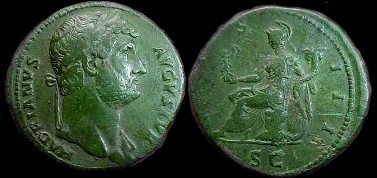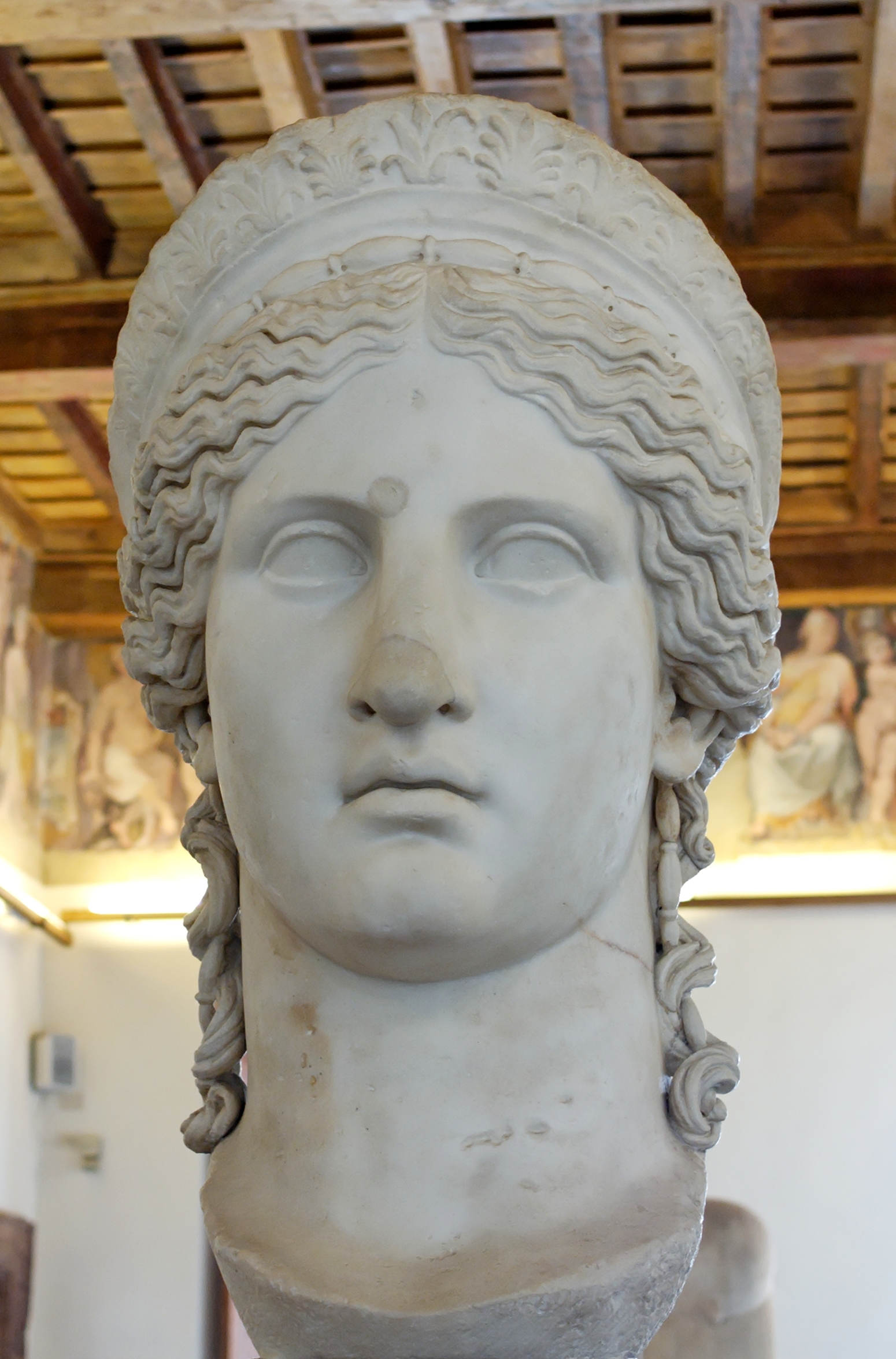|
Charmis Of Marseilles
Charmis of Marseilles (fl. 1st century AD) was a famous Roman physician. A native of Massilia, he came to Rome during the reign of Nero. Pliny counted him as a "completely Greek physician". He achieved great fame and fortune in Rome by introducing the practice of cold bathing, which supplanted the astrological medicine of his fellow townsman Crinas. Crinas had in turn supplanted Thessalus, who followed the principles of the Methodic school of medicine. It is said that he charged a client two hundred thousand sesterces for his services. He also practiced outside Rome, probably in his native Massilia. After some dealings with a "sick man from the provinces" he was fined a million sesterces by Claudius, who also exiled him. Nonetheless, according to Pliny, he quickly regained a fortune while in exile in Gaul and after his return in Rome. It is thought that Charmis of Marseilles and the "Charmes" mentioned in Galen Aelius Galenus or Claudius Galenus ( el, Κλαύδιος Γαλ� ... [...More Info...] [...Related Items...] OR: [Wikipedia] [Google] [Baidu] |
Nero
Nero Claudius Caesar Augustus Germanicus ( ; born Lucius Domitius Ahenobarbus; 15 December AD 37 – 9 June AD 68), was the fifth Roman emperor and final emperor of the Julio-Claudian dynasty, reigning from AD 54 until his death in AD 68. He was adopted by the Roman emperor Claudius at the age of 13 and succeeded him on the throne. Nero was popular with the members of his Praetorian Guard and lower-class commoners in Rome and its provinces, but he was deeply resented by the Roman aristocracy. Most contemporary sources describe him as tyrannical, self-indulgent, and debauched. After being declared a public enemy by the Roman Senate, he committed suicide at age 30. Nero was born at Antium in AD 37, the son of Gnaeus Domitius Ahenobarbus and Agrippina the Younger, a great-granddaughter of the emperor Augustus. When Nero was two years old, his father died. His mother married the emperor Claudius, who eventually adopted Nero as his heir; when Cla ... [...More Info...] [...Related Items...] OR: [Wikipedia] [Google] [Baidu] |
Pliny The Elder
Gaius Plinius Secundus (AD 23/2479), called Pliny the Elder (), was a Roman author, naturalist and natural philosopher, and naval and army commander of the early Roman Empire, and a friend of the emperor Vespasian. He wrote the encyclopedic '' Naturalis Historia'' (''Natural History''), which became an editorial model for encyclopedias. He spent most of his spare time studying, writing, and investigating natural and geographic phenomena in the field. His nephew, Pliny the Younger, wrote of him in a letter to the historian Tacitus: Among Pliny's greatest works was the twenty-volume work ''Bella Germaniae'' ("The History of the German Wars"), which is no longer extant. ''Bella Germaniae'', which began where Aufidius Bassus' ''Libri Belli Germanici'' ("The War with the Germans") left off, was used as a source by other prominent Roman historians, including Plutarch, Tacitus and Suetonius. Tacitus—who many scholars agree had never travelled in Germania—used ''Bella Germa ... [...More Info...] [...Related Items...] OR: [Wikipedia] [Google] [Baidu] |
Crinas Of Marseilles
Crinas (Crinias) of Marseilles was a 1st-century physician from Massilia (Marseilles), contemporary of the Emperor Nero. He practiced medicine in Massilia, having mathematical and astrological knowledge. What we know about him comes from a few lines of Pliny the Elder in his '' Natural History'', book XXIX, 5 (9). Having heard of Thessalus of Tralles, who made a great reputation for himself in Rome by practicing the same kind of medicine as himself, Crinas left his hometown to establish himself in Rome to compete with him. Very quickly, by his superior astrology, he diminished the credit of Thessalos by taking away half of his clients. He consulted the stars before prescribing diet and meal times for his patients, according to mathematical tables, which made him pass as more prudent, more learned and more religious than other physicians. He became so rich that he paid for the fortifications of several cities during his lifetime, and when he died left ten million sesterces Th ... [...More Info...] [...Related Items...] OR: [Wikipedia] [Google] [Baidu] |
Thessalus Of Tralles
Thessalus of Tralles (fl. circa 70–95 AD) was a famous Roman physician and early adherent to the Methodic school of medicine. He lived in Rome,Pliny, ''H. N.'' xxix. 5 where he was the court physician of Emperor Nero. It was here that he died and was buried, and his tomb was to be seen on the ''Via Appia''.Galen, ''De Meth. Med.'', i. 2, vol. x He was from Tralles in Lydia. He was the son of a weaver, and followed the same employment himself in his youth. This, however, he soon gave up, and, though he had a poor general education, he embraced the medical profession, by which he acquired for a time a great reputation, and amassed a large fortune. He adopted the principles of the Methodic school, but modified and developed them. He appears to have exalted himself at the expense of his predecessors; asserting that none of them had contributed to the advance of medical science, and boasting that he himself could teach the art of healing in six months. Galen frequently mentions him, ... [...More Info...] [...Related Items...] OR: [Wikipedia] [Google] [Baidu] |
Methodic School
The Methodic school of medicine (''Methodics'', ''Methodists'', or ''Methodici'', el, Μεθοδικοί) was a school of medicine in ancient Greece and Rome. The Methodic school arose in reaction to both the Empiric school and the Dogmatic school (sometimes referred to as the Rationalist school). While the exact origins of the Methodic school are shrouded in some controversy, its doctrines are fairly well documented. Sextus Empiricus points to the school's common ground with Pyrrhonism, in that it “follow the appearances and take from these whatever seems expedient.” History There is no clear consensus on who founded the Methodic school and when it was founded. It has been supposed that the Methodic school was founded by the students of Asclepiades. In particular, Themison of Laodicea, Asclepiades’ most distinguished student, is often credited with founding the Methodic school in the first century BC. However, some historians claim that the Methodic school was found ... [...More Info...] [...Related Items...] OR: [Wikipedia] [Google] [Baidu] |
Sesterces
The ''sestertius'' (plural ''sestertii''), or sesterce (plural sesterces), was an ancient Roman coin. During the Roman Republic it was a small, silver coin issued only on rare occasions. During the Roman Empire it was a large brass coin. The name ''sestertius'' means "two and one half", referring to its nominal value of two and a half '' asses'' (a bronze Roman coin, singular ''as''), a value that was useful for commerce because it was one quarter of a denarius, a coin worth ten ''asses''. The name is derived from ''semis'', "half" and "tertius", "third", in which "third" refers to the third ''as'': the sestertius was worth two full ''asses'' and half of a third. English-language sources routinely use the original Latin form ''sestertius'', plural ''sestertii''; but older literature frequently uses ''sesterce'', plural ''sesterces'', ''terce'' being the English equivalent of ''tertius''. A modern shorthand for values in sestertii is IIS (Unicode 𐆘), in which the Roman nume ... [...More Info...] [...Related Items...] OR: [Wikipedia] [Google] [Baidu] |
Claudius
Tiberius Claudius Caesar Augustus Germanicus (; 1 August 10 BC – 13 October AD 54) was the fourth Roman emperor, ruling from AD 41 to 54. A member of the Julio-Claudian dynasty, Claudius was born to Drusus and Antonia Minor at Lugdunum in Roman Gaul, where his father was stationed as a military legate. He was the first Roman emperor to be born outside Italy. Nonetheless, Claudius was an Italian of Sabine origins. As he had a limp and slight deafness due to sickness at a young age, he was ostracized by his family and was excluded from public office until his consulship (which was shared with his nephew, Caligula, in 37). Claudius's infirmity probably saved him from the fate of many other nobles during the purges throughout the reigns of Tiberius and Caligula, as potential enemies did not see him as a serious threat. His survival led to him being declared emperor by the Praetorian Guard after Caligula's assassination, at which point he was the last adult ... [...More Info...] [...Related Items...] OR: [Wikipedia] [Google] [Baidu] |
Galen
Aelius Galenus or Claudius Galenus ( el, Κλαύδιος Γαληνός; September 129 – c. AD 216), often Anglicized as Galen () or Galen of Pergamon, was a Greek physician, surgeon and philosopher in the Roman Empire. Considered to be one of the most accomplished of all medical researchers of antiquity, Galen influenced the development of various scientific disciplines, including anatomy, physiology, pathology, pharmacology, and neurology, as well as philosophy and logic. The son of Aelius Nicon, a wealthy Greek architect with scholarly interests, Galen received a comprehensive education that prepared him for a successful career as a physician and philosopher. Born in the ancient city of Pergamon (present-day Bergama, Turkey), Galen traveled extensively, exposing himself to a wide variety of medical theories and discoveries before settling in Rome, where he served prominent members of Roman society and eventually was given the position of personal physician to se ... [...More Info...] [...Related Items...] OR: [Wikipedia] [Google] [Baidu] |
1st-century Roman Physicians
The 1st century was the century spanning AD 1 ( I) through AD 100 ( C) according to the Julian calendar. It is often written as the or to distinguish it from the 1st century BC (or BCE) which preceded it. The 1st century is considered part of the Classical era, epoch, or historical period. The 1st century also saw the appearance of Christianity. During this period, Europe, North Africa and the Near East fell under increasing domination by the Roman Empire, which continued expanding, most notably conquering Britain under the emperor Claudius (AD 43). The reforms introduced by Augustus during his long reign stabilized the empire after the turmoil of the previous century's civil wars. Later in the century the Julio-Claudian dynasty, which had been founded by Augustus, came to an end with the suicide of Nero in AD 68. There followed the famous Year of Four Emperors, a brief period of civil war and instability, which was finally brought to an end by Vespasian, ninth Roman emperor ... [...More Info...] [...Related Items...] OR: [Wikipedia] [Google] [Baidu] |
Ancient Massaliotes
Ancient history is a time period from the beginning of writing and recorded human history to as far as late antiquity. The span of recorded history is roughly 5,000 years, beginning with the Sumerian cuneiform script. Ancient history covers all continents inhabited by humans in the period 3000 BCAD 500. The three-age system periodizes ancient history into the Stone Age, the Bronze Age, and the Iron Age, with recorded history generally considered to begin with the Bronze Age. The start and end of the three ages varies between world regions. In many regions the Bronze Age is generally considered to begin a few centuries prior to 3000 BC, while the end of the Iron Age varies from the early first millennium BC in some regions to the late first millennium AD in others. During the time period of ancient history, the world population was already exponentially increasing due to the Neolithic Revolution, which was in full progress. While in 10,000 BC, the world population stood at ... [...More Info...] [...Related Items...] OR: [Wikipedia] [Google] [Baidu] |





_-_Veloso_Salgado.png)

